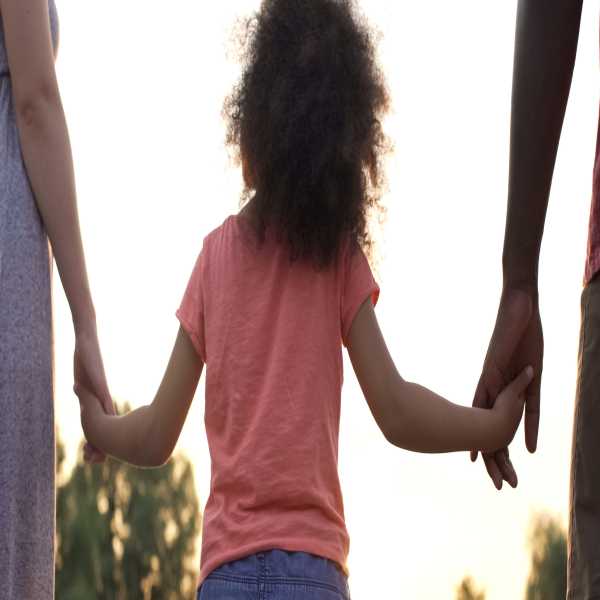It matters who the two parents are in two parent households.

Credit: Motortion Films
Some questions have uncomfortable answers. For example, no one at a Georgetown cocktail party wants to admit the solution to intergenerational poverty cycles is marriage. Polite society will talk for hours about after-school programs to keep kids out of trouble and government checks for single-parent homes before ever admitting whose sledgehammer smashed the only institution which both increases a parent’s income and improves a child’s outcomes in one sweep. Yet there it is, in bold headline letters in the Atlantic this week: “Why Marriage Should Be a National Priority.”
The magazine has gotten something very right here: Married parents are quite likely the biggest factor correlated to a child’s health, success, and happiness in life. But “marriage” as a writer at the Atlantic might define it, or as the Supreme Court of the United States has defined it, is not really what makes a difference here. Just any two adults won’t do. If the goal is to break the generational cycle of poverty, a federal policy promoting marriage would indeed make an enormous difference, but only if it defines marriage as any working class American would have less than 50 years ago: one man and one woman, for better and for worse.
This is unlikely, of course. But it is also profoundly important. The mere fact of having two adults in the room does not necessarily make a child’s life more stable than when they have just one. Where substance abuse and mental instability are involved, two are almost certainly worse. (In such cases, perhaps, it is better to have “one hand full with tranquility,” as King Solomon wrote, than “two with toil.”)
So yes, it matters which two adults. Specifically, it particularly matters whether one is male and the other is female. Data on every attempted family arrangement other than when a child lives with her married, biological mother and father show there is truly no second place: In every non-traditional arrangement, outcomes for the child are markedly worse. This is especially clear in the case of children raised by same-sex couples, who, while still a relatively new cohort, have at least been studied more than those raised under still more novel innovations on family structure.
For obvious reasons, any child in a same-sex household already represents a broken relationship, either having been conceived with a previous partner or as a product of assisted reproductive technologies. Children raised by same-sex parents are statistically more likely to have depression as adults, to experience poor educational attainment, to exhibit more impulsive behavior, to be unemployed, to have frequent arrests, to identify as bisexual, lesbian, or gay, to have depression and thoughts of suicide, and to be sexually molested. This is the offensive reality, and it is most offensive to the children who suffer for their parent’s sake.
Such tragedies are only encouraged when we pretend that two women are the same as a man and a woman, or that a child carried by a surrogate mother does not have to overcome a primal wound like any other adopted child. For all the purported adult happiness the new definition of marriage has brought (we will save our doubts about this for another day), the pursuit of individual gratification has led, undoubtedly, to collective misery for too many American children.
Subscribe Today Get daily emails in your inbox Email Address:
The marriage of the man and woman who created that child, conversely, leads to exponentially better outcomes for a child, especially when viewed in aggregate: increased stability, education, and financial success, along with decreased anxiety and engagement in destructive social behaviors. This is the magic of biology, which is to say it is the magic of design. The child’s knowledge that the man who fathered you will always love and protect the woman who bore you is unmatched. Anthony Kennedy’s language of the “enduring bond” in which “two persons together can find other freedoms, such as expression, intimacy, and spirituality” means nothing to the son who must pretend another woman can replace his father.
We know how we got here. The road to Obergefell was paved by Ronald Reagan’s signing of the nation’s first no-fault divorce law in California in 1969, which fundamentally gutted the word “marriage” as we knew it. It was paved as well by Griswold, by Roe, and by Casey. The binding covenant is long gone, and even the at-will contract holds little sway. It will take much more than a few male support programs, or child tax benefits, then, to right this ship. It will certainly take more than the promotion of a hollow, state-sponsored contract, neutered of every tie to its historic and covenantal meaning, to transform the impoverished lives of too many American children.
If we want to save marriage—and we do, at least those of us who hope to bless our children rather than curse them—we must recognize that the only marriage which will make a difference is the one which consists of one man and one woman, a handful of duties and a lifetime of sanctification, and all the greatest joys which follow those who kneel beneath the weight of glory.
Sourse: theamericanconservative.com






